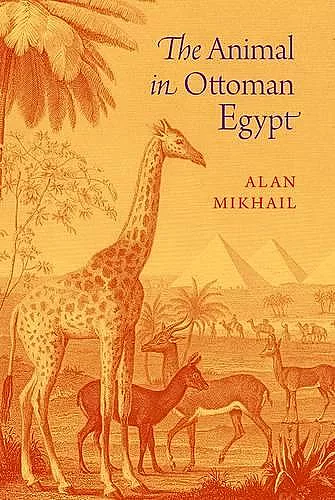The Animal in Ottoman Egypt
Format:Paperback
Publisher:Oxford University Press Inc
Published:13th Apr '17
Currently unavailable, and unfortunately no date known when it will be back
This paperback is available in another edition too:
- Hardback£84.00(9780199315277)

Since humans first emerged as a distinct species, they have eaten, fought, prayed, and moved with other animals. In this stunningly original and conceptually rich book, historian Alan Mikhail puts the history of human-animal relations at the center of transformations in the Ottoman Empire from the sixteenth to the nineteenth centuries. Mikhail uses the history of the empire's most important province, Egypt, to explain how human interactions with livestock, dogs, and charismatic megafauna changed more in a few centuries than they had for millennia. The human world became one in which animals' social and economic functions were diminished. Without animals, humans had to remake the societies they had built around intimate and cooperative interactions between species. The political and even evolutionary consequences of this separation of people and animals were wrenching and often violent. This book's interspecies histories underscore continuities between the early modern period and the nineteenth century and help to reconcile Ottoman and Arab histories. Further, the book highlights the importance of integrating Ottoman history with issues in animal studies, economic history, early modern history, and environmental history. Carefully crafted and compellingly argued, The Animal in Ottoman Egypt tells the story of the high price humans and animals paid as they entered the modern world.
The book is well researched and supported by copious archival and manuscript resources from Europe, North America, North Africa, and Asia.... Mikhail marshals abundant evidence to support his thesis about the dramatic changes in human-animal relationships wrought by modernization. * Tobias J. Lanz, Environmental History *
Camels, donkeys, dogs, and water buffalo have their histories too, and in this compact book Alan Mikhail deftly shows just how closely intertwined they, and the histories of other animals, were with the human history of Ottoman Egypt. Carefully researched, lavishly illustrated, and engagingly written, this book sets a high standard for the historical study of human-animal relations and opens new vistas on the history of Egypt. * J.R. McNeill, author of Mosquito Empires *
In this deeply and imaginatively researched book, Alan Mikhail uses insights drawn from the new field of animal history to revisit major transitions in Egyptian history, including modernization, urbanization, and integration into global networks. Particularly striking is the way his argument encompasses both the material conditions of animal existence, such as labor and disease, and the more abstract impact of religion, law, and politics. * Harriet Ritvo, Massachusetts Institute of Technology *
This is a fascinating book, which uses the diminishing presence of animals in various key locations to shed light on major social transformations in late 18th and early 19th century Egypt. Everything from climate and bacteria to foreign imperialists and their new technologies shaped the new Egypt that we see emerging in this book; each of these agents of change gets its due in Mikhail's intricate story. * Kenneth Pomeranz, University of Chicago *
ISBN: 9780190655228
Dimensions: 231mm x 155mm x 23mm
Weight: 522g
336 pages